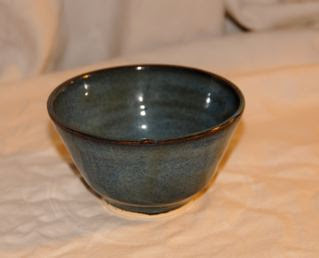Question
How does the time of day affect my throwing ability? Do I throw better on day that I do teach and if so, before or after I teacher, or do I throw better on days that I do not teach? Is there in relationship between my self-evaluations and that of my audience?
Hypothesis
I predict that I will throw better on days that I do not teach. I also predict that there will be a positive correlation between my self-evaluations and the audience ratings.
Controlled Variables
1 pound of clay per vessel
45-minute increment periods
glaze color
Independent Variable
Day and Time of day
Dependent Variable
Skill Level
Experiment
I plan to throw pottery at three different times of days: when I teach (before and after) and when I do not teach. Before each 45-minute session, I will fill out a self-evaluation form. Each session, I will rate each piece I throw on a scale from 1-10. At a later date, I will host a rating performance in which I will ask an audience to rate my pieces on a scale from 1-10 as well. I will then compare the average audience rating to my own self-evaluations. Throughout the process, I will maintain a Relative Ability Pottery blog (www.relativeabilitypottery.blogspot.com). As the experiment proceeds, I will add more information to the blog such as photos, self-evaluations, and eventually the experiment results.
Materials
Medium-bodied porcelain clay
Wheel
Clay tools
Water
Mid-range glaze
Kiln
Location from rating show
Paper ballots for ranking
Internet accessibility
Blog
Photography equipment
Preparations
Self-Evaluation Form
- How many hours of sleep did I get last night?
- 0-3
- 3-5
- 5-7
- 7-9
- 9-11
- On a scale from 1-10, how stressed am I feeling today?
- On a scale from 1-10, how happy do I feel today?
- On a scale from 1-10, how satisfied with life do I feel today?
- The color that best describes my mood today is:
- Physical Health
- The music I am listening to as I throw is:
- Ranking while throwing
- Pottery#a: ranking
- Pottery#b: ranking
- c. Etc.
Observations
The most prominent observation I have made throughout the experiment is my lack of motivation during days that I do teach. If I throw before I teach, I am too anxious. If I throw after I teach, after school, I am usually exhausted. I have more motivation to throw pottery on days that I do not teach. However, so far, I am noticing little variance in skill level.
Glaze color: I do not feel like I can glaze my vessels with a clear glaze. I do not believe that the clear glaze will enhance the project in anyway. I do believe that I must keep my glaze consistent. On every self-evaluation I asked myself what color I would be. Overwhelming I picked greys and blues, therefore, I have decided to glaze accordingly. I will use a medium range floating blue glaze.
Rating Performance: While considering the amount of vessel I have and am asking my audience to rate, I fear that many people would be overwhelmed to rate all 50 or so pieces. At the rating performance, with the advice of Frank Martin, I will split the pottery into groups of ten and change out the pottery to be rated throughout the night. The pottery groups will be chosen in a random order.
During the rating show at the Emporium on First Friday April 2, 2010, I noticed that there were predominantly two types of people that observed my pottery. Some of my audience clearly did not want to take their time to evaluate even 8-10 pieces. Many were interested in looking but not participating. Others though were very excited about participating in art. Many said things such as, “This is neat! You actually want to hear what I have to say.” “I like interactive art.” The rating was completely voluntary.Data
See excel file for more accurate data
Graphs
See previous post.
Analysis
Overall there will a positive correlation between my self-evaluations and the audience ratings. The range of variance is between –3.00 and +3.83. On average, there was less than 1-point variance between the self-evaluations and the audience ratings. The –3.00 almost seems like an outlier. More frequently than not, I rate between 0.01 and 1 points lower than the audience.





































